Selected References:
- Ahlborg G et al. 1995. Reproductive effects of chemical exposures in health profession. J Occup Environ Med; 37: 957-961.
- Albin K. 2010. Administering Chemotherapy: Is It Safe for Pregnant or Breast-feeding Veterinary Technicians? MediMedia Animal Health: 1-5.
- Allweiler SI, Kogan LR. 2013. Inhalation anesthetics and the reproductive risks associated with occupational exposure among women working in veterinary anesthesia. Vet Anaesth Analg. 40(3):285-9.
- Bartram DJ, et al. 2009. Psychological working conditions and work-related stressors among UK veterinary surgeons. Occup Med (Lond); 59(5):334-41.
- Boivin JF. 1997. Risk of spontaneous abortion in women occupationally exposed to anesthetic gases: a meta-analysis. Occup Environ Med; 54: 541-548.
- California Veterinary Medical Board. 2012. Radiation Safety Relating to Veterinary Medicine and Animal Health Technology in California. https://www.vmb.ca.gov/forms_pubs/radguide.pdf [accessed 10/2019]
- 2015. Veterinary Safety and Health. https://www.cdc.gov/niosh/topics/veterinary/hazard.html [accessed 10/2019]
- Cohen, WR et al. 2000. Environmental and Occupational Hazards. Cherry and Merkatz’s Complications of Pregnancy. Philadelphia: Lippincott Williams & Wilkins.
- Duke T. Partial intravenous anesthesia in cats and dogs. Can Vet J. 2013 Mar;54(3):276-82.
- Epp T, Waldner C. 2012. Occupational health hazards in veterinary medicine: zoonoses and other biological hazards. Can Vet J. 53(2):144-50.
- Figà-Talamanca I. 2000. Reproductive problems among women health care workers: epidemiologic evidence and preventive strategies. Epidemiologic Reviews; 22:249-260.
- Fowler HN, et al. 2016. Survey of occupational hazards in Minnesota veterinary practices in 2012. J Am Vet Med Assoc. 248(2):207-18.
- Gilani S & Giridharan S. 2014. Is it safe for pregnant health-care professionals to handle cytotoxic drugs? A review of the literature and recommendations. Ecancermedicalscience. 8:418.
- MacDonald LA, et al. 2013. Clinical guidelines for occupational lifting in pregnancy: evidence summary and provisional recommendations. Am J Obstet Gynecol; 209(2): 80-88.
- Meisner J, et al. 2018: Maternal veterinary occupation and adverse birth outcomes in Washington State, 1992-2014: a population-based retrospective cohort study. Occup Environ Med; 75(5):359-368.
- Molter B, et. al. 2019. Current policies and support services for pregnant and parenting veterinary medical students and house officers at United States veterinary medical training institutions. J Vet Med Educ Summer 46(2):145-152.
- National Institute of Health. 2016. NIOSH list of antineoplastic and other hazardous drugs in healthcare settings, 2016. Publication Number 2016-161 (Supersedes 2014-138).
- National Institute for Occupational Safety and Health. 2023. Managing hazardous drug exposures: information for healthcare settings. By Hodson L, Ovesen J, Couch J, Hirst D, Lawson C, Lentz TJ, MacKenzie B, Mead K. Cincinnati, OH: U.S. Department of Health and Human Services, Centers for Disease Control and Prevention, National Institute for Occupational Safety and Health, DHHS (NIOSH) Publication No. 2023-130, https://doi.org/10.26616/NIOSHPUB2023130
- Occupational Safety & Health Administration. 2000. Anesthetic Gases: Guidelines for Workplace Exposures. https://www.osha.gov/dts/osta/anestheticgases/index.html [accessed 10/2019]
- Pacheco K. 2007. New Insights into laboratory animal exposures and allergic responses. Current Opinion in Allergy and Clinical Immunology. 7:156-161.
- Polovich M. 2004. Safe Handling of Hazardous Drugs. Online J of Issues in Nursing. 9:3,5.
- Rodrigues AC, et al. 2017. Risk Factors for Nasal Colonization by Methicillin-Resistant Staphylococci in Healthy Humans in Professional Daily Contact with Companion Animals in Portugal. Microb Drug Resist. PMID: 28922060.
- Scheftel JM, et. al. 2017. Review of hazards to female reproductive health in veterinary practice. J Am Vet Med Assoc 250(8):862-872.
- Schuhaber S, et al. 2002. A prospective-controlled study of pregnant veterinary staff exposed to inhaled anesthetics and x-rays. Int J Occup Med Environ Health, (15)4; 363-373.Scheftel JM, et al. 2017. Review of hazards to female reproductive health in veterinary practice. J Am Vet Med Assoc. 250(8):862-872.
- Shirangi, A, et al. 2008. Maternal Occupational Exposures and Risk of Spontaneous Abortion in Veterinary Practice. Occupational and Environmental Medicine 65.11 (2008): 719-25.
- Toppenberg K, et al. 1999. Safety of Radiographic Imaging During Pregnancy. Am Fam Physician. 59(7):1813-1818.
- Van Dusen S. 2012. Pregnant? There Are Risks Veterinary Professionals Should Consider. National Association of Veterinary Technicians in America.
- Varughese S, Ahmed R. 2021. Environmental and Occupational Considerations of Anesthesia: A Narrative Review and Update. Anesth Analg. 133(4):826-835.
- Veterinary Infection Control Committee, National Association of State Public Health Veterinarians. 2010. Compendium of Veterinary Standard Precautions for Zoonotic Disease Prevention in Veterinary Personnel. http://www.nasphv.org/Documents/VeterinaryStandardPrecautions.pdf [accessed 10/2019]
- Veterinary Infection Control Committee, National Association of State Public Health Veterinarians. 2010. Model Infection Control Plan for Veterinary Practices. nasphv.org/Documents/ModelInfectionControlPlan.doc [accessed 7/2023],
- Wilkes MS, et al. 2019. One health-one education: Medical and veterinary inter-professional training. J Vet Med Educ 46(1):14-20.

